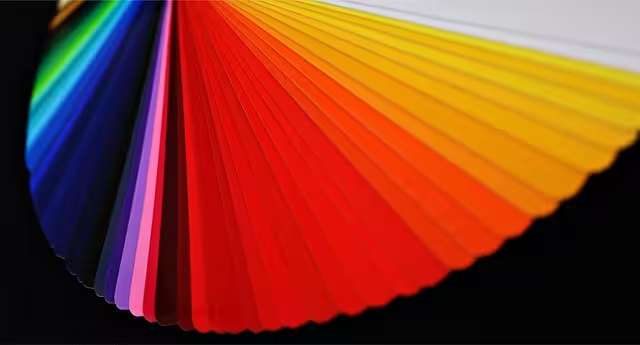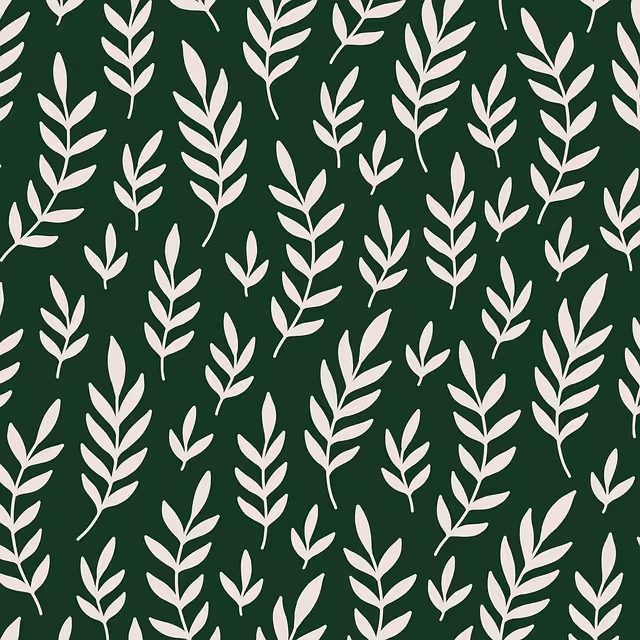That feeling of digital exhaustion—the screen-induced fatigue from sterile interfaces and harsh, artificial layouts. We’ve all felt it. Now, contrast that with the effortless calm you feel when looking out a window at a sprawling garden or a dense forest. What if you could bottle that sense of natural tranquility and infuse it into your website? It might seem purely aesthetic, a matter of taste. But what if that feeling could actually improve your website’s performance in search rankings? It’s a critical question for any brand operating online: Can biophilic design, the practice of connecting people with nature, indirectly improve your SEO?
The answer is a definitive, albeit indirect, yes. While biophilic design is not a conventional ranking factor like a backlink or a keyword, its profound impact on user behavior creates a powerful ripple effect that search engines like Google absolutely notice. The core of this connection lies in a simple thesis: by leveraging humanity’s innate attraction to nature—a concept the biologist E.O. Wilson famously termed the Biophilia Hypothesis—you can create a more engaging, calming, and valuable user experience. This enhanced experience directly influences the key metrics that Google values, ultimately leading to better search performance over time. It’s not about tricking an algorithm; it’s about serving the human on the other side of the screen.
Table of Contents
What is Biophilic Web Design?
To understand its SEO implications, one must first grasp that biophilic web design is an architectural and psychological principle applied to a digital medium. It transcends mere decoration; it is a systematic approach to web creation that uses nature as its primary inspiration. Its goal is to reduce stress and enhance cognitive function by creating digital environments that feel more natural and humane.
This practice is generally categorized into two core principles, heavily influenced by the foundational work of consultancies like Terrapin Bright Green:
- Direct Experience of Nature: This is the most literal application. It involves integrating tangible, unambiguous representations of nature into the website’s fabric. This includes high-resolution photography and videography of landscapes, flora, and fauna. It can also manifest as the dynamic use of light and shadow to mimic a sunlit forest canopy or the subtle sound of water or wind as an optional background element. The key is authenticity; the user feels a direct, albeit digital, connection to a natural element.
- Indirect Experience of Nature: This approach is more subtle and structural. It involves the use of materials, colors, patterns, and forms that evoke a natural feeling without being literal representations. A website background might use a texture that feels like stone or wood grain. The layout of content blocks could follow the Fibonacci sequence or other fractal patterns, which are ubiquitous in natural growth (e.g., shells, flowers, and tree branches). Color palettes are drawn from earthy tones, deep greens, and sky blues. This indirect experience creates a subconscious sense of order, familiarity, and calm, mirroring the inherent mathematics and sensory experience of the natural world.
The Bridge to SEO: User Experience as a Ranking Signal

A visually appealing website is of little value if it doesn’t perform. The critical link between biophilic design and SEO is User Experience (UX). Google’s algorithms are increasingly sophisticated, moving beyond a simple analysis of keywords and backlinks to measuring how real users interact with a page. A positive user experience sends strong signals to Google that your page is a valuable resource. Biophilic design directly enhances these signals.
Here are the specific UX metrics it influences:
- Increased Dwell Time: Dwell time measures how long a user stays on your page after clicking through from a search result. A chaotic, stressful, or confusing interface encourages a quick exit. A biophilic design, with its calming aesthetics and intuitive, natural flow, invites exploration. Users are more likely to remain on the page, read the content, and engage with its elements. This extended engagement signals to Google that your content successfully satisfied the user’s query.
- Reduced Bounce Rate: A bounce occurs when a user visits a single page on your site and then leaves without taking any further action. High bounce rates can indicate a poor user experience or irrelevant content. The immediate impression of a website is crucial. A biophilic site that feels open, organized, and aesthetically pleasing can instantly build trust and intrigue, significantly reducing the likelihood of an immediate departure.
- Improved Long-Term Click-Through Rate (CTR): While on-page design doesn’t directly alter your CTR from the search engine results page (SERP), it builds brand equity. A user who has a positive, memorable experience on your site is more likely to recognize and choose your brand in future search results, leading to a higher organic CTR over time.
- Compatibility with Core Web Vitals (CWV): A competent implementation of biophilic design is not at odds with technical performance. While large images and complex scripts can slow a site down, a skilled designer ensures these elements are optimized. Images should be compressed, videos should lazy-load, and complex patterns should be rendered efficiently using CSS rather than bulky image files. A successful biophilic website must still achieve excellent scores for Largest Contentful Paint (LCP), Interaction to Next Paint (INP), and Cumulative Layout Shift (CLS). The goal is a seamless fusion of natural aesthetics and elite technical performance.
Commonly Asked Questions

- How does website design affect SEO?: Website design is the vessel for your content and the foundation of your user experience. Search engines like Google interpret user behavior as a proxy for quality. If your design is unintuitive, slow, or visually jarring, users will leave quickly. This results in low dwell time and high bounce rates, which are negative signals that can harm your rankings. Conversely, a well-structured, fast, and engaging design—hallmarks of a properly implemented biophilic approach—improves these user metrics, providing positive reinforcement to search engines that your site is a high-quality destination.
- What are the benefits of biophilic design?: The benefits extend far beyond indirect SEO improvement. Drawing on research from pioneers like the late Stephen R. Kellert, we know that exposure to nature and natural patterns can yield significant psychological and physiological advantages. For a website user, this translates to reduced stress and eye strain, improved cognitive function and focus, and enhanced creativity. From a business perspective, this creates a stronger, more positive brand association and a more memorable user experience that fosters loyalty.
- Does Google care about website aesthetics?: Google cares about user satisfaction. While its crawlers parse HTML and measure loading times, they do not have a subjective sense of “beauty.” However, they rigorously measure the human reaction to your website. Aesthetics are a critical component of that reaction. A design that users find pleasing, trustworthy, and easy to navigate will keep them on the page longer and encourage them to engage more deeply. Google’s algorithms detect this positive engagement, interpreting it as a sign of a high-quality page, which can indirectly lead to improved rankings.
Practical Application: Implementing Biophilic Design for SEO Gains

Adopting this philosophy is a practical exercise in strategic design. Here are actionable ways to implement it:
- Color Palette: Move beyond default web colors. Utilize palettes derived from nature. Think of the deep greens of a forest, the rich browns of soil and bark, the calming blues of water and sky, and the warm ochres of a desert landscape. Use tools like Adobe Color to extract palettes from nature photographs.
- Imagery & Video: Choose authenticity over generic stock photos. Use high-quality, original images of natural landscapes, plants, or even abstract natural textures. If using video, implement subtle, looping backgrounds of flowing water, shifting clouds, or wind moving through leaves. Ensure all media is highly optimized for web performance to avoid harming Core Web Vitals.
- Patterns & Textures: The digital world is dominated by simple lines and boxes. Break this monotony by incorporating subtle backgrounds with textures that evoke paper, wood, or stone. For layout, consider biomorphic forms and fractal patterns. Arrange elements in a way that mimics natural growth—not a rigid grid, but a more organic, flowing structure that guides the eye.
- Layout & Space (Negative Space): In nature, space is essential. An overcrowded forest is unhealthy; an overcrowded webpage is unusable. Embrace negative space (or “white space”) to create a sense of openness and calm. Use it to separate elements, improve readability, and guide the user’s focus to the most important content, much like a path through a garden.
Conclusion: A Symbiotic Relationship for Digital Growth
We began by asking if a design philosophy rooted in nature could impact the cold, hard metrics of SEO. The connection, while indirect, is undeniable. Biophilic design is not a simple hack or a technical trick; it is a fundamental shift in perspective. It proposes that the most effective way to appeal to Google’s algorithms is to first appeal to the human being that the algorithm serves.
By strategically weaving the patterns, colors, and forms of nature into the digital canvas, you create a more compelling, less stressful, and fundamentally more human experience. This superior user experience is reflected in tangible metrics—longer dwell times, lower bounce rates, and improved user satisfaction. These are the very signals that search engines increasingly rely on to identify and reward high-quality websites. Ultimately, biophilic design fosters a symbiotic relationship where human-centric design and technical SEO performance thrive together, cultivating sustainable digital growth.
To assess how these principles could transform your own digital presence, consider a consultation with the experts at Silphium Design LLC.
